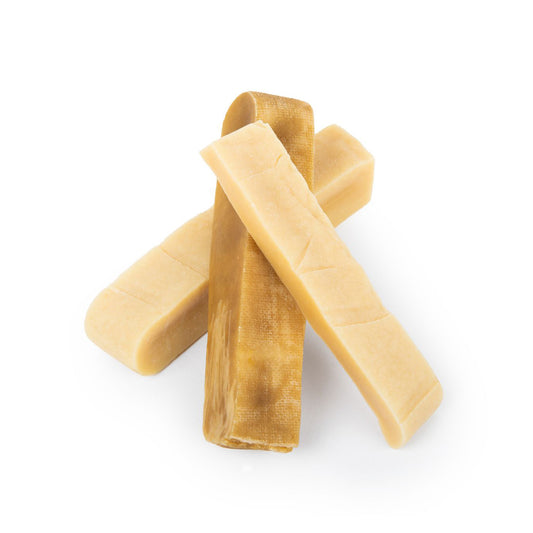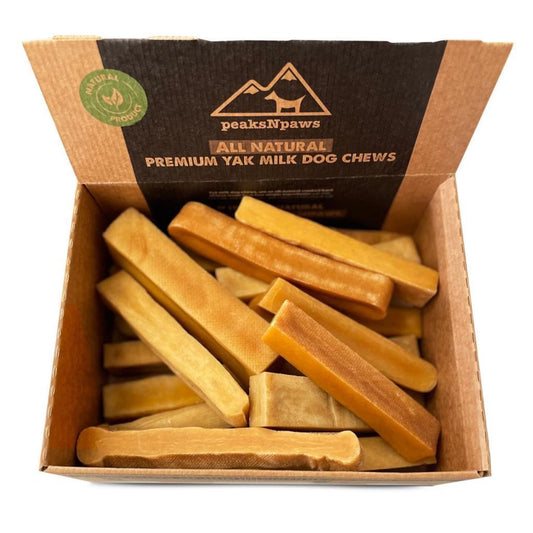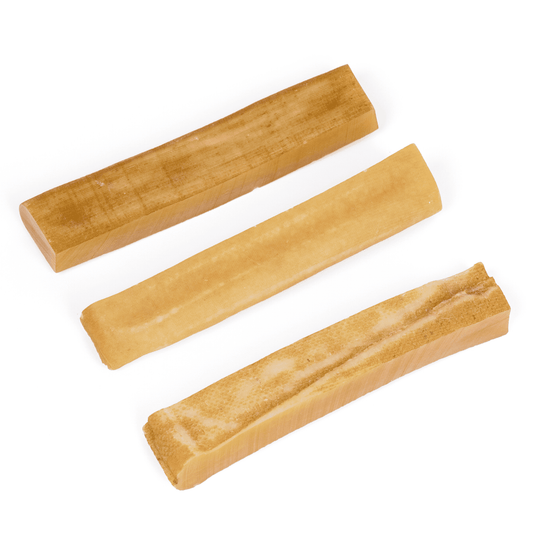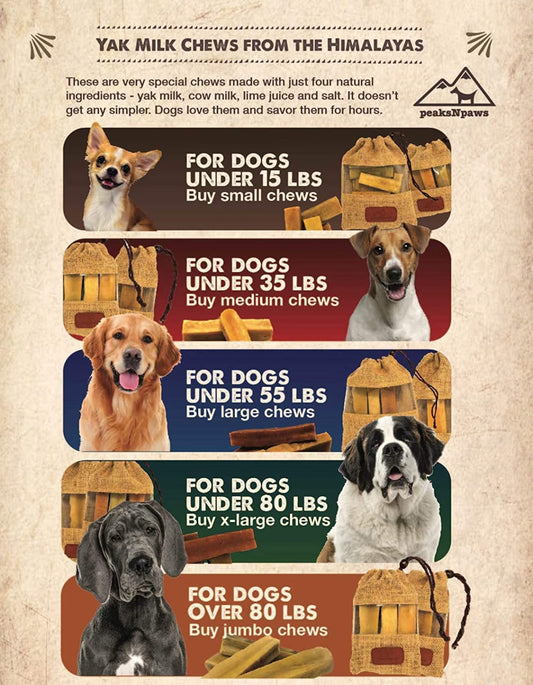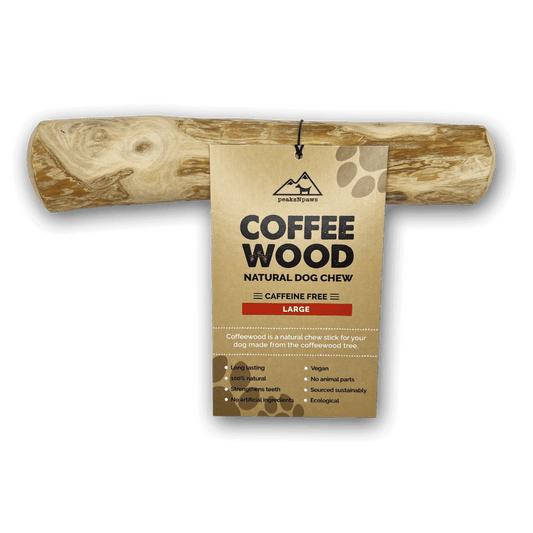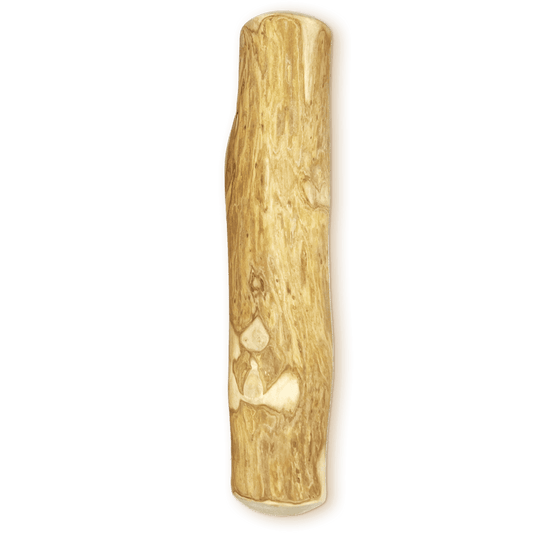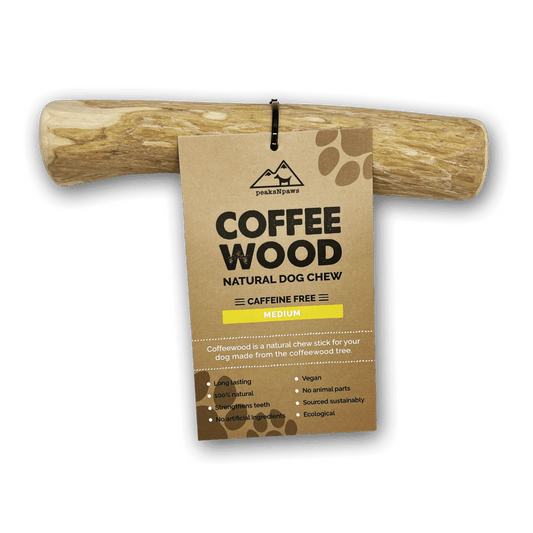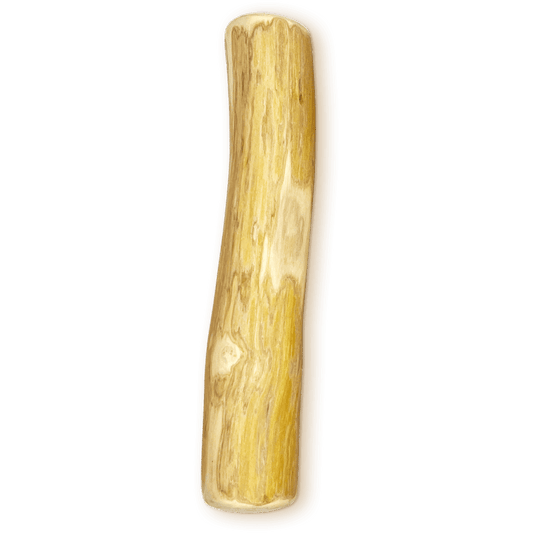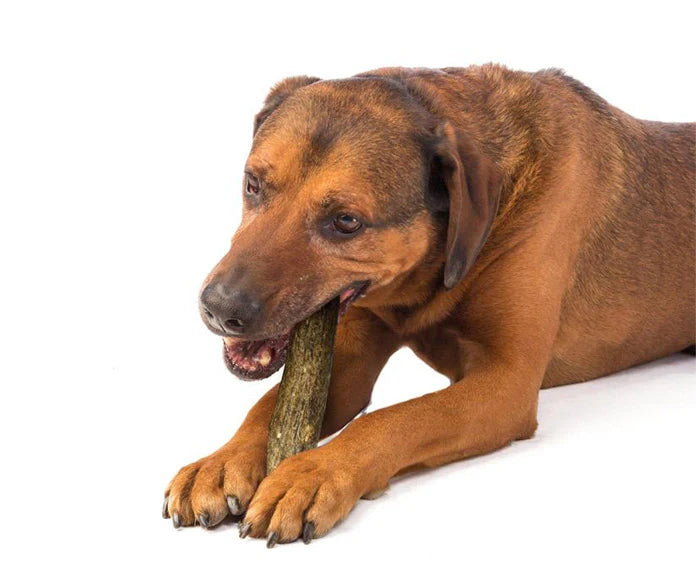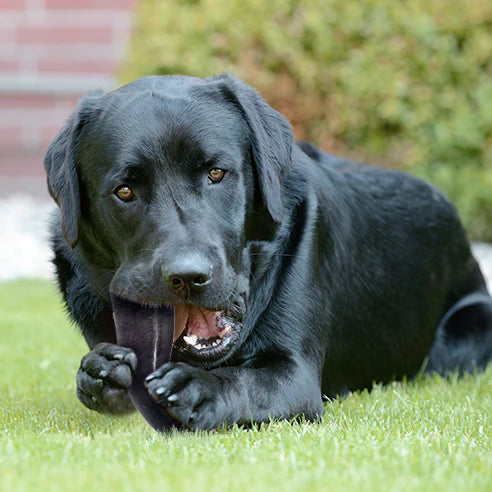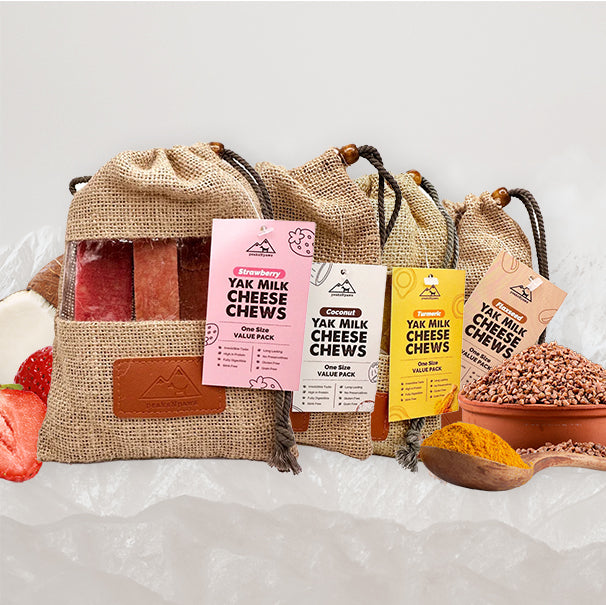Antlers have gained popularity among dog owners for their durability and dental benefits. However, it's not uncommon for some dogs to ignore these chews altogether, leaving owners puzzled. In this blog, we'll delve into the world of antler chews, explore why some dogs may ignore them, and discuss the importance of addressing this issue for your dog's dental health and overall well-being.

Overview of Antler Chews:
Antler chews are natural dog chews made from shed antlers, typically from deer or elk. They are prized for their long-lasting nature and their ability to promote dental health by reducing plaque and tartar buildup on dogs' teeth.
Despite their benefits, many dog owners encounter the frustrating problem of their dogs ignoring antler chews. Some dogs may show little interest in chewing on antlers, preferring other toys or treats instead. Understanding why dogs ignore antler chews is the first step in finding a solution.
Importance of Addressing the Issue:
Regular chewing is essential for maintaining healthy teeth and gums, and antler chews offer a natural way to promote dental hygiene. By addressing this issue and making antler chews more appealing to your dog, you can help ensure their dental health and provide them with an enjoyable chewing experience.
In the subsequent sections, we'll delve into tips and strategies to make antler chews more appealing to your dog, including selecting the right type and size of antler chew, and incorporating training techniques to encourage chewing. Join us as we explore these solutions and help your dog rediscover the joy of chewing on antler chews.
Understanding Your Dog's Preferences:
A. Factors Influencing Dogs' Chew Preferences:
- Texture: Some dogs may prefer softer or harder textures when it comes to chewing.
- Flavor: Dogs are drawn to certain flavors, so the taste of the antler chew may influence their interest.
- Size and Shape: The size and shape of the antler chew should be comfortable for your dog to hold and chew on.
- Chewing Style: Dogs have different chewing styles, with some preferring to gnaw while others may enjoy shredding or tearing.
- Age and Breed: Age and breed can also play a role in a dog's chewing preferences, with puppies and certain breeds having different needs and preferences.
B. Observing Your Dog's Behavior:
Pay attention to how your dog interacts with different types of toys and chews.
Notice if your dog shows any signs of discomfort or disinterest when presented with antler chews.
Observe whether your dog chews more enthusiastically on certain textures or flavors.
C. Identifying Potential Reasons for Ignoring Antler Chews:
- Unfamiliarity: Your dog may be unfamiliar with antler chews and need time to adjust to them.
- Incorrect Size or Type: The antler chew may not be the right size or type for your dog's preferences or chewing style.
- Lack of Flavor: Some dogs may be more enticed by flavored chews rather than plain antler chews.
- Dental Issues: If your dog has dental problems or discomfort, they may avoid chewing on hard objects like antlers.
- Boredom: Dogs may ignore antler chews if they have other more stimulating toys or activities available.
Understanding these factors can help you identify why your dog may be ignoring antler chews and guide you in finding solutions to make them more appealing.
Tips to Make Antler Chews More Appealing:
Choose the Right Size and Type:
Ensure the antler chew is appropriately sized for your dog, neither too small to pose a choking hazard nor too large to be uncomfortable.
Consider the type of antler chew that matches your dog's chewing preferences, whether it's a whole antler, split antler, or a specific shape or texture.
Enhance with Treats or Peanut Butter:
Spread a thin layer of dog-safe peanut butter on the antler chew to add flavor and encourage your dog to engage with it.
You can also insert small treats or kibble into the crevices of the antler chew to create a rewarding and stimulating chewing experience.
Rotate Chews Regularly:
Rotate different types of chews and toys to prevent boredom and maintain your dog's interest in antler chews.
Introducing new chews periodically keeps the experience fresh and exciting for your dog, preventing them from losing interest.
Engage in Interactive Play:
Use the antler chew as part of interactive play sessions with your dog, incorporating games like fetch or tug-of-war.
Interactive play not only encourages your dog to engage with the antler chew but also strengthens your bond and provides mental stimulation.
By implementing these tips, you can make antler chews more appealing to your dog and encourage them to reap the dental and chewing benefits these natural chews provide. Experiment with different strategies to find what works best for your furry friend, and enjoy watching them enjoy their antler chew.

Experimenting with Different Types of Chews:
Comparing Antler Chews with Other Types (e.g., Rawhide, Rubber Toys):
Antler Chews:
- Natural origin: Antler chews are crafted from shed antlers, making them a natural and sustainable option.
- Dental benefits: Antler chews promote dental health by reducing plaque and tartar buildup on dogs' teeth.
- Long-lasting: Antler chews are known for their durability, providing hours of chewing enjoyment for dogs.
Rawhide:
- Composition: Rawhide chews are made from the inner layer of cow or horse hides, processed and shaped into chews.
- Choking hazards: Rawhide chews can pose choking risks, especially for dogs who swallow large pieces or chew them aggressively.
- Digestive issues: Some dogs may experience digestive problems, such as blockages or irritation, from consuming rawhide.
Rubber Toys:
- Durability: Rubber toys are sturdy and resilient, making them suitable for heavy chewers.
- Safety: Rubber toys are generally safe for dogs, as they are less likely to splinter or break into sharp pieces.
- Dental benefits: While rubber toys can provide entertainment, they may not offer the same dental benefits as antler chews.
Take into account any dental health issues or dietary restrictions your dog may have.
Experiment with different types of chews to determine which ones best meet your dog's preferences and needs. Choosing the right chew for your dog is crucial for their enjoyment and well-being. By comparing antler chews with other options like rawhide and rubber toys, understanding their benefits and drawbacks, and considering your dog's preferences and needs, you can make an informed decision and provide your furry friend with a safe and satisfying chewing experience.
Training Techniques to Encourage Chewing:
A. Positive Reinforcement:
Use treats, praise, or other rewards to positively reinforce your dog's chewing behavior when they engage with the desired chew, such as an antler chew.
Reward your dog immediately after they show interest in or interact positively with the chew, reinforcing the behavior.
B. Interactive Play Sessions:
Incorporate the chew into interactive play sessions to make chewing more enjoyable and rewarding for your dog.
Use toys or games that encourage chewing behavior, such as fetch or tug-of-war, to promote interaction with the chew.
C. Supervised Chewing Time:
Set aside specific times for supervised chewing sessions, during which you can monitor your dog's behavior and ensure they chew safely.
Use this time to encourage your dog to chew on the desired chew, redirecting their attention if they attempt to chew on inappropriate items.
D. Gradual Introduction and Desensitization:
Introduce the chew gradually, allowing your dog to become familiar with it at their own pace.
Use desensitization techniques, such as placing the chew near your dog during meal times or incorporating it into their daily routine, to help them overcome any hesitations or fears they may have about chewing on it.
By employing these training techniques, you can encourage your dog to embrace chewing on the desired chew, such as an antler chew, and reinforce positive chewing behaviors. Consistency, patience, and positive reinforcement are key to successfully encouraging your dog to chew on the appropriate items and enjoy the many benefits of chewing for their dental health and overall well-being.

Factors to Consider When Selecting Chews:
- Durability: Choose chews that are sturdy and durable, especially for dogs who are aggressive chewers.
- Size: Select chews that are appropriate for your dog's size to prevent choking hazards and ensure safe chewing.
- Ingredients: Opt for chews made from natural and safe ingredients, avoiding artificial additives or preservatives.
- Dental Benefits: Consider chews that promote dental health by reducing plaque and tartar buildup on your dog's teeth.
- Allergies: Take into account any food allergies or sensitivities your dog may have when selecting chews with specific ingredients.
Tailoring Chews to Your Dog's Size and Breed:
- Small Breed Dogs: Choose smaller-sized chews that are easy for small breed dogs to handle and chew on.
- Large Breed Dogs: Select larger-sized chews that can withstand the powerful jaws of large breed dogs and provide them with a satisfying chewing experience.
- Breed-Specific Needs: Consider any breed-specific characteristics or tendencies when choosing chews, such as heavy chewers or dogs with strong prey drives.
Addressing Potential Concerns and Safety Measures:
A. Monitoring Chew Sessions:
- Supervise your dog during chewing sessions to ensure they chew safely and avoid any potential hazards.
- Watch for signs of discomfort, choking, or excessive aggression while your dog is chewing on a chew toy or treat.
- Intervene if necessary to redirect your dog's chewing behavior or remove any unsafe items from their reach.
B. Inspecting Antler Chews for Wear and Tear:
- Regularly inspect antler chews for signs of wear and tear, including cracks, splinters, or sharp edges.
- Discard any antler chews that show signs of damage to prevent injury or ingestion hazards for your dog.
- Replace antler chews as needed to ensure your dog always has a safe and enjoyable chewing experience.
By implementing these safety measures and addressing potential concerns, you can help ensure that your dog enjoys a safe and beneficial chewing experience with antler chews or other chew toys. Regular monitoring, inspection, and veterinary guidance are essential components of responsible pet ownership and contribute to your dog's overall health and well-being.

Conclusion:
Choosing the right chew for your dog is crucial for their dental health, overall well-being, and enjoyment. By considering factors such as your dog's size, breed, chewing habits, and preferences, you can select the most suitable chew option that promotes safe and satisfying chewing experiences. Additionally, addressing potential concerns and implementing safety measures, such as monitoring chew sessions and inspecting chew toys for wear and tear, ensures your dog's safety and reduces the risk of injury or ingestion hazards.
At peaksNpaws, we understand the importance of providing high-quality chews that meet the diverse needs of dogs and their owners. That's why we're proud to offer the best antler chews in the market, crafted from authentic, sustainably sourced antlers and carefully inspected for quality and safety. Our antler chews are naturally rich in minerals, long-lasting, and promote dental health, making them the perfect choice for dogs of all sizes and breeds.
Experience the difference with peaksNpaws' antler chews and give your dog the gift of safe, enjoyable chewing. Explore our range of antler chews today and join our community of satisfied customers who trust peaksNpaws for their dog's chewing needs. Your dog deserves the best, and with peaksNpaws, you can provide them with the highest quality antler chews available in the market.

